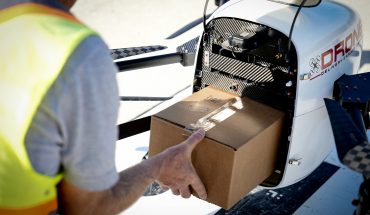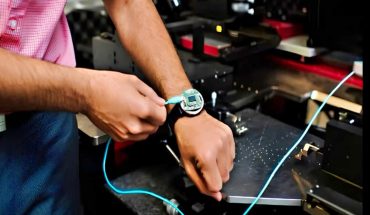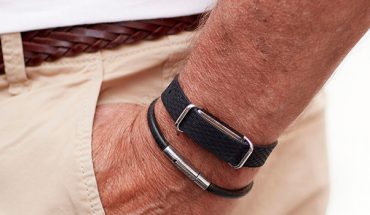There’s no getting around health ailments. We all have them, young or old. Visits to the doctor are a necessity of life, especially if you have issues that require constant monitoring and addressing. But the latest in health tech is making at-home testing, both for those who want to proactively self-monitor as well as work on their own preventative care before issues arise, is moving at a rapid pace.
I’ll preface this by noting that no at-home testing device takes the place of a visit to and assessment with a medical professional. But in some cases, these at-home devices can provide useful data you can present to a medical professional, especially when there’s a companion app that stores historical data.
The Consumer Electronics Show 2023 (CES ) was a hotbed of innovation in the at-home health tech space. From devices that measure stats in new ways (think a fingertip device that can check your blood pressure) to ones that analyze factors that historically could not be measured at home (like urine), there’s plenty coming this year and beyond.
Valencell Cuffless Blood Pressure Monitor
Blood pressure monitors for the home are nothing new. Many doctors with patients who have high or low blood pressure often request that they buy and use a blood pressure monitor at home to keep track of readings from day to day or week to week, especially if they are on medication. They can jot down the readings manually, but smart blood pressure monitors sync data to an app so all the information is at the ready automatically. The patient can present these readings at the next visit with a doctor, which paints a much more accurate picture then a single measurement a few times per year.
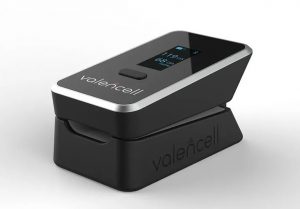 Historically, blood pressure monitors fit around the arm via a cuff. This connects to a machine that displays the reading once an accurate measurement has been taken. But Valencell aims to change the game with its cuffless blood pressure monitor. The company demonstrated the device at CES 2023, which it claims to be the first of its kind.
Historically, blood pressure monitors fit around the arm via a cuff. This connects to a machine that displays the reading once an accurate measurement has been taken. But Valencell aims to change the game with its cuffless blood pressure monitor. The company demonstrated the device at CES 2023, which it claims to be the first of its kind.
Valencell says the device doesn’t need a cuff nor calibration of any kind. Instead, it uses special algorithms and photoplethysmography (PPG) sensors to measure diastolic and systolic numbers through your fingertip, just like a pulse oximeter would measure blood oxygen or heart rate the same way. The measurement is taken from the light that reflects back from the skin.
The device is still pending FDA approval, but it has the potential to change the game, making it far easier to take a quick blood pressure measurement from just about anywhere. The lightweight device is small enough to fit in a pocket.
Withings U-Scan
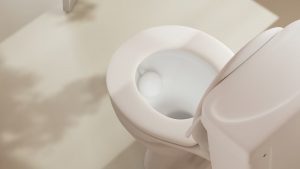 One of the most talked about gadgets from CES 2023 was the Withings U-Scan, a puck-like device that fits into the toilet and can analyze your urine. It then provides detailed information about your health through biomarkers found in your urine. Position it near the front of the inside of the bowl (sorry guys, this means you have to sit down to urinate in order for the stream to come in contact with the U-Scan). Using a replaceable cartridge system, swap out each one as needed every three months, and the device comes with a pair in the box. A Stream ID can even identify different people in the household based on their unique streams, movement, and distance, so each person gets their individual readings.
One of the most talked about gadgets from CES 2023 was the Withings U-Scan, a puck-like device that fits into the toilet and can analyze your urine. It then provides detailed information about your health through biomarkers found in your urine. Position it near the front of the inside of the bowl (sorry guys, this means you have to sit down to urinate in order for the stream to come in contact with the U-Scan). Using a replaceable cartridge system, swap out each one as needed every three months, and the device comes with a pair in the box. A Stream ID can even identify different people in the household based on their unique streams, movement, and distance, so each person gets their individual readings.
Measuring the more than 3,000 metabolites in urine, Withings purports that U-Scan can monitor for a variety of health conditions. You can view stats in the Withings Health Mate app. Stats will include everything from women’s menstrual cycles with cycle predictions and ovulation windows to details about hydration, pH levels, dietary biomarkers, and more.
Scheduled to launch in Europe in Q2 2023, it might be some time before U-Scan makes its way to North America, and particularly to Canada. But the device has garnered a lot of excitement from those who feel that, with refinements and added features, it could help in the early detection of many potential issues. If a home urine test detects something’s off, this could prompt someone to visit a doctor to get a urine test there and confirm before the potential issue gets worse.
Opteev ViraWarn Breath Analyzer
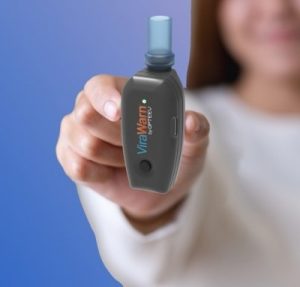 Due to COVID-19, we’re all familiar with the swab-up-the-nose testing method for viruses. Chances are, you have taken a rapid antigen COVID-19 test or two (likely many more) from the comfort of your own home, then waited anxiously in hopes there wouldn’t be a dreaded red line beside the “T.” Opteev showcased an interesting innovation in the ViraWarn Breath Analyzer that, if approved and deemed effective, could change the way we test for not only COVID-19 but other respiratory viruses as well, like the flu. It’s small and pocket-sized so you can easily bring it with you anywhere. It works by analyzing your breath after you blow into it: a biosensor attracts the electrical discharge of respiratory-based viruses while an AI processor eliminates any inaccuracies. It accomplishes this in 60 seconds.
Due to COVID-19, we’re all familiar with the swab-up-the-nose testing method for viruses. Chances are, you have taken a rapid antigen COVID-19 test or two (likely many more) from the comfort of your own home, then waited anxiously in hopes there wouldn’t be a dreaded red line beside the “T.” Opteev showcased an interesting innovation in the ViraWarn Breath Analyzer that, if approved and deemed effective, could change the way we test for not only COVID-19 but other respiratory viruses as well, like the flu. It’s small and pocket-sized so you can easily bring it with you anywhere. It works by analyzing your breath after you blow into it: a biosensor attracts the electrical discharge of respiratory-based viruses while an AI processor eliminates any inaccuracies. It accomplishes this in 60 seconds.
The biosensor cartridges are replaceable with each one only needing to be replaced every two to three weeks or when there is a positive test (or if someone else is going to use it). It will come with several cartridges in the box as well.
Opteev has submitted the ViraWarn to the FDA for authorization, where it is still pending.
Loba Smart Pill Organizer
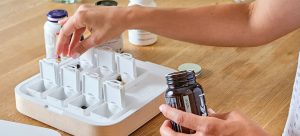 The Loba Smart Pill Organizer is not necessarily a medical device, but it’s designed to help those who require medication (particularly multiple types) or who take lots of supplements and vitamins, to better manage their daily intake schedules. Designed by Vancouver-based Kate Bouchard, making Loba not only a Canadian business but also a female-led one, the Loba Smart Pill Organizer fills a hole in the market that Bouchard says she discovered was evident. She came up with the idea after not being able to find something elegant and functional she could use to manage her own daily intake of vitamins and supplements.
The Loba Smart Pill Organizer is not necessarily a medical device, but it’s designed to help those who require medication (particularly multiple types) or who take lots of supplements and vitamins, to better manage their daily intake schedules. Designed by Vancouver-based Kate Bouchard, making Loba not only a Canadian business but also a female-led one, the Loba Smart Pill Organizer fills a hole in the market that Bouchard says she discovered was evident. She came up with the idea after not being able to find something elegant and functional she could use to manage her own daily intake of vitamins and supplements.
The stylish box holds various pills and supplements in neatly organized individual and divided compartments. Set daily reminders for what you need to take when. The box will illuminate in a customizable colour so you know what pill you should take at any given time. There are even two sides, one for mornings and one for evenings in case you need to take double doses of anything. If you won’t be home at a time when a pill is needed, grab the individual compartment, pop it into a purse, briefcase, or even pocket, and go.
The Wi-Fi connected organizer is perfect to keep at your home office desk, for example, night table, or even in the front foyer so you can grab the right pills on your way in or out the door. Use the Loba app, meanwhile, to manage schedules, customize the glow, and adjust as you add or remove pills, vitamins, or supplements from your daily regimen
Tech Could Change the Health Care Game
It’s clear with the latest health tech technology that companies are working on not only products that can make managing your health convenient, but also focusing on prevention. Being able to identify potential issues from your home before they become real concerns could help alleviate stress on the health care system. If an anomaly is detected, make an appointment with a doctor and verify if it’s something to be concerned about.
Early detection for many conditions and illnesses is critical, and if at-home gadgetry can help make this a possibility, it could have massive implications for the future of health care.
-30-
More on digital health

